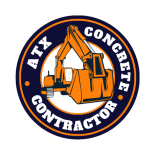Concrete sealing is more than just applying a coat; it involves a systematic process aimed at fortifying the material against decay and ensuring its longevity. Delve deeper into the intricacies of the concrete sealing process to grasp its significance and the steps involved.
The Concrete Sealing Process
Surface Preparation: Comprehensive surface preparation sets the stage for successful concrete sealing. Beyond mere cleaning, this step involves thorough assessment and repair of any surface imperfections. Pressure washing or using chemical cleaners removes deeply embedded dirt, grime, and previous coatings, creating an optimal base for the sealant. Repairing cracks, spalling, or unevenness ensures that the surface is uniform, enhancing the adhesion and effectiveness of the sealant.
Choosing the Right Sealant: The diverse array of sealant types offers specific benefits and functionalities. Penetrating sealers, for instance, are excellent for preserving the natural look of concrete while providing protection from water penetration. Film-forming sealers, on the other hand, create a protective layer that offers robust water and stain resistance but might alter the concrete’s appearance. Understanding the surface characteristics, such as porosity or exposure to weather elements, helps determine the ideal sealant that aligns with the specific needs of the surface.
Application Techniques: The application process demands precision and attention to detail. Whether using brushes, rollers, or sprayers, each method requires careful consideration to ensure uniform coverage across the entire surface. Properly applying the sealant prevents over-application or missed spots, maximizing its protective capabilities. Depending on the type of sealant and manufacturer recommendations, applying multiple coats may be necessary to bolster protection and enhance durability.
Curing Time: Allowing the sealant to cure properly is crucial for its effectiveness. Adequate curing time ensures that the sealant forms a strong and durable protective layer on the concrete surface. Factors like temperature and humidity significantly impact the curing process; understanding and monitoring these conditions are vital to optimize the curing time for the best results. Rushing through the curing process can compromise the integrity of the sealant and its long-term performance.
Ongoing Maintenance: Regular inspections of the sealed surface are vital for the early detection of wear or damage. Routine assessments help in identifying potential issues promptly, allowing for immediate repairs and preventive maintenance. Periodic resealing is a critical aspect of maintenance, ensuring that the protective layer remains intact and functional. This scheduled upkeep is essential for the long-term durability and performance of the sealed concrete surface. Regular care and maintenance preserve the sealant’s effectiveness, enhancing the lifespan of the concrete and safeguarding it against environmental stressors.
Expert Tips for Concrete Sealing Success
Prioritize Surface Preparation: Thorough Cleaning: Surface cleanliness is fundamental before applying a sealant. Removing debris, oils, and stains not only improves the adhesion of the sealant but also ensures a consistent, durable bond with the concrete. This preparatory step maximizes the effectiveness of the sealant application, providing lasting protection.
Repair First: Addressing cracks, spalling, or any surface imperfections before sealing is essential. Repairing these issues not only improves the aesthetics but also sets the foundation for a smoother, more uniform sealant application. It’s a preventive measure against potential water penetration, which could compromise the overall integrity of the concrete.
Select the Right Sealant: Match to Surface Characteristics: Understanding the unique characteristics of the concrete, such as porosity, exposure levels, and the intended use of the surface, aids in choosing the most suitable sealant. This tailored approach ensures that the sealant’s properties complement the surface, optimizing its protective capabilities.
Quality Over Cost: Investing in high-quality sealants is crucial. While cost-effective options might seem appealing initially, superior-quality sealants provide better protection and longevity. They offer enhanced resistance to weathering, chemicals, and abrasion, ensuring prolonged and effective surface protection.
Precision in Application: Follow Manufacturer Guidelines: Adhering strictly to the manufacturer’s instructions for application is paramount. Each sealant has unique characteristics and requires specific application techniques and drying times. Following these guidelines guarantees optimal adhesion and performance.
Even Application: Consistency in application is vital for the sealant’s effectiveness. Ensuring uniform coverage across the entire surface prevents weak spots and potential areas of vulnerability. An evenly applied sealant layer maximizes its protective qualities and extends its durability.
Patience During Curing: Ideal Environmental Conditions: Curing conditions significantly impact the effectiveness of the sealant. Maintaining suitable temperatures and humidity levels as recommended by the manufacturer is crucial. These optimal conditions facilitate proper curing, ensuring the sealant forms a robust protective layer.
Avoid Traffic During Curing: It’s essential to avoid foot or vehicle traffic on freshly sealed surfaces until the sealant has fully cured. This precaution prevents damage and ensures the sealant sets correctly, maximizing its longevity and effectiveness.
Routine Maintenance and Inspection: Regular Checks: Scheduled routine inspections are essential to identify any signs of wear or damage to the sealed surface. Timely detection of issues allows for immediate repairs, preventing minor problems from escalating into larger ones.
Timely Resealing: Planning periodic resealing based on environmental exposure and the type of sealant used is key. Regular reapplication extends the lifespan of the protection, maintaining its efficacy and preserving the surface’s integrity.
Benefits of Concrete Sealing:
Enhanced Durability: Reinforces concrete against cracks and spalling, prolonging its lifespan and structural integrity.
Water Resistance: Creates a barrier, preventing moisture intrusion and reducing the risk of erosion and damage.
Chemical Protection: Shields concrete from corrosive substances, minimizing degradation and preserving its strength.
Weather Resistance: Guards against UV rays, extreme temperatures, and freeze-thaw cycles, maintaining surface quality.
Aesthetic Preservation: Maintains concrete’s appearance, preventing discoloration and facilitating easier cleaning.
Conclusion
Understanding the intricacies of the concrete sealing process unveils its critical role in fortifying concrete against degradation. From meticulous surface preparation to selecting the right sealant and precise application techniques, each step contributes to enhancing durability and prolonging the life of concrete structures. By comprehending and implementing these steps, one can ensure concrete surfaces remain robust, resilient, and protected against the test of time and environmental factors.
